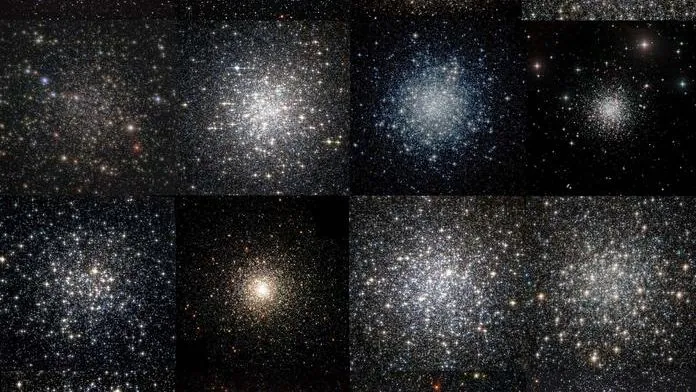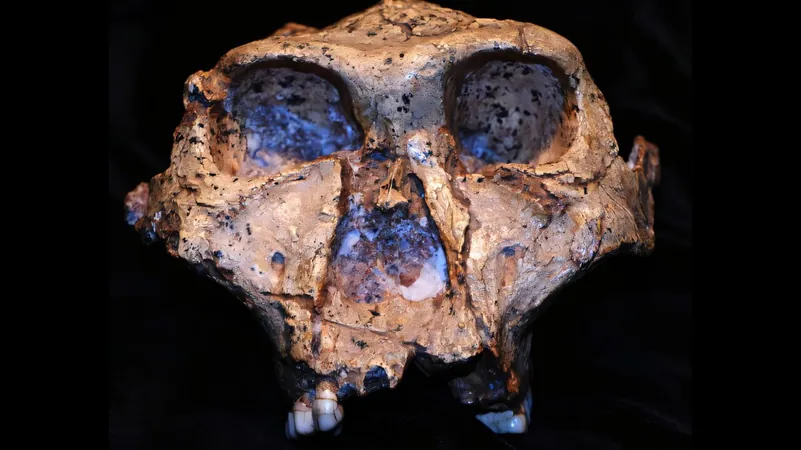
Unveiling the Mysteries of Globular Clusters: A Revolutionary 3D Analysis Shows Their Birth and Evolution
2024-11-11
Author: John Tan
Introduction
In the vastness of the Milky Way, a plethora of fascinating cosmic structures can be observed, from swirling arms of stars to the enigmatic dark clouds of gas and dust that shroud their secrets. Among these intriguing phenomena are globular clusters—dense collections of stars that hold the key to understanding the universe's early history.
Groundbreaking Research
Recent groundbreaking research conducted by an international team of astronomers marks a significant leap in our knowledge of these star-studded neighborhoods. For the first time, scientists have employed a comprehensive 3D kinematic analysis involving a sample of 16 globular clusters within our galaxy. This innovative approach has shed light on the dynamic movements of stars within these clusters, detailing their evolution from formation to the present day.
Observational Tools
The project utilized important observational tools such as the European Space Agency's Gaia satellite and the European Southern Observatory's Very Large Telescope (VLT), as part of the Multi Instrument Kinematic Survey (MIKIS). The findings offer an unprecedented view into the velocity and distribution of stars within these stellar realms.
Findings of the Study
Emanuele Dalessandro, the lead author of the study, explained, "Our research provides solid evidence that globular clusters formed through multiple star-formation events and outlines the dynamic paths these clusters have taken through time." This insight is crucial, as it challenges long-held notions about the solitary formation of these ancient star groups.
Antiquity of Globular Clusters
Globular clusters are especially remarkable due to their antiquity; many date back 12 to 13 billion years, meaning they are some of the oldest remnants from the early universe, just a few billion years after the Big Bang. They are not only plentiful in our galaxy but also serve as artisans of stellar evolution, containing diverse populations of stars that range from youthful to ancient, distinguished by their metal content.
Kinematic Analysis
"Analyzing the motion of thousands of stars within each cluster revealed unique kinematic traits among different populations," noted co-author Alessandro Della Croce. "Stars with unusual chemical compositions tend to rotate faster and disperse from the cluster's center over time."
Implications for Galaxy Formation
This detailed analysis opens a gateway to unraveling answers to critical questions surrounding galaxy formation and evolution. Dalessandro remarked, "The implications of our research are profound; globular clusters not only enhance our understanding of cosmological models but also act as natural laboratories for the study of how galaxies form, evolve, and enrich their chemical complexity over billions of years."
Conclusion
As scientists delve deeper into the mysteries of globular clusters, the knowledge gained could provide pivotal insights into the conditions of the early universe and the mechanisms that shaped the galaxies we see today. This landmark study serves as a pivotal chapter in the ongoing quest to unlock the secrets of our cosmic origins. Stay tuned as more revelations from the depths of space emerge!



 Brasil (PT)
Brasil (PT)
 Canada (EN)
Canada (EN)
 Chile (ES)
Chile (ES)
 Česko (CS)
Česko (CS)
 대한민국 (KO)
대한민국 (KO)
 España (ES)
España (ES)
 France (FR)
France (FR)
 Hong Kong (EN)
Hong Kong (EN)
 Italia (IT)
Italia (IT)
 日本 (JA)
日本 (JA)
 Magyarország (HU)
Magyarország (HU)
 Norge (NO)
Norge (NO)
 Polska (PL)
Polska (PL)
 Schweiz (DE)
Schweiz (DE)
 Singapore (EN)
Singapore (EN)
 Sverige (SV)
Sverige (SV)
 Suomi (FI)
Suomi (FI)
 Türkiye (TR)
Türkiye (TR)
 الإمارات العربية المتحدة (AR)
الإمارات العربية المتحدة (AR)